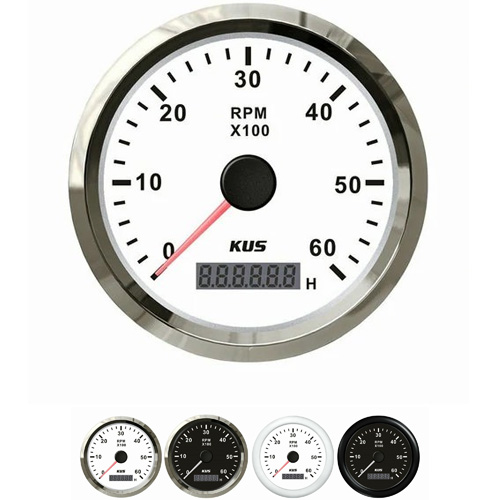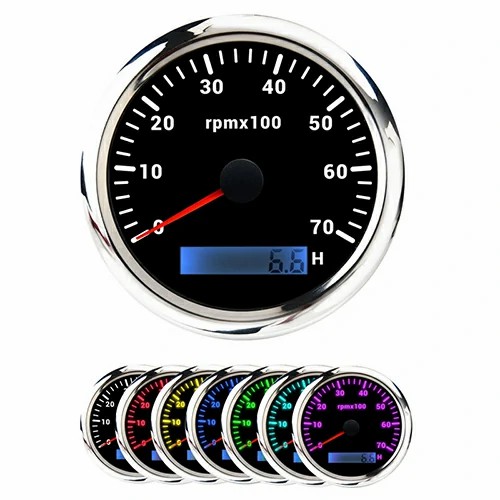what does a tachometer measure
The tachometer receives the digital pulse signal (by the sensor) and directly reads it into the CPU for calculation and processing. After that, the software calculates the speed and the corresponding pointer position. Then, through the control of the CPU, it expands and drives the stepper motor to rotate in the positive and negative directions, and displays the corresponding speed value (the pointer is directly installed on the rotation of the stepper motor). The stepper motor step is only the third degree.
1. Static torque pointer jitter is not easy, strong vibration resistance.
2. Using single chip microprocessor and software design, it has high precision and anti-interference.
3. The hour meter adopts liquid crystal display and has no mechanical part, so it is more reliable and has the feeling of time.
Because the pointer indication conforms to the traditional habit of visual cognition and is convenient for computer remote processing and network requirements, the digital instrument stepping motor is the development trend of modern automobile instruments and the stepping motor of motorcycle instruments , motorcycles and engineering machinery instruments at home and abroad. Automobile micro stepping motor is a new type of automobile special instrument accessories. Using it to design the instrument conforms to the traditional visual cognitive habits, and is an ideal part of modern instruments. Speed measurement method f / V conversion electronic speed measuring instrument, speed sensor and instrument (display).
So far, common speed sensors output pulse signals, as long as they match the pointer meter and digital meter of variable frequency current and voltage current input type, or directly send them to PLC; The method of variable frequency current integration has resistance, charge pump and ASIC method. The first two methods are also used in magnetoelectric speedometer.
At present, the commonly used ASIC is the same as LM331 ad654 vf32, and the conversion accuracy is 0.1%; But at low frequencies, conversion is powerless.
MCU and FPGA, f / D and D / a conversion, the conversion accuracy is 0.5 ~ 0.05%, ranging from 0 ~ 2 Hz to 0 ~ 20 kHz. When you have a frequency of less than 10 Hz, it reflects a longer time. For F / V conversion, please refer to the corresponding chip introduction and application data, which is not needed in this paper.
According to the accuracy, reliability, flexibility, cost and specific requirements on the frequency operation display screen, the instrument operated by speed pulse frequency can be directly used.
Frequency calculation method and time calculation method (frequency measurement method), fate opportunity week (test method) and time synchronization counting method. The time calculation method (frequency measurement method) has a measurement error of plus or minus 1, and the error is large at low speed; When the fate timing method (weekly measurement method) also has errors of plus or minus 1 unit, the error is also great at high speed. The timing synchronous counting method combines the above two methods and has the advantages of high precision. In the whole measurement range, the measurement of more than 5 / 10000 speedometer is basically the same.
 English
English 



Get a Quote / Info